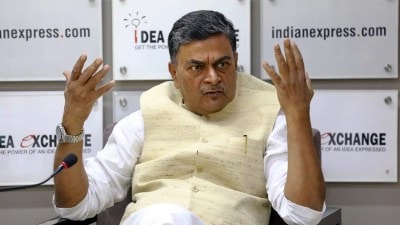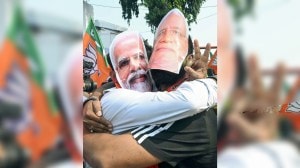When it comes to trust, Govt still mai baap for majority public
In order of safety, the top three instruments are house, land, and postal savings—almost nine out of 10 believe them to be safe. Next c...

But according to the Indian Retirement Earning and Saving database released by the Finance Ministry last week, more than 60 per cent Indians believe that deposits in private banks are not safe. Over 85 per cent of them consider deposits in a nationalised bank as safe.
• What about gold, is that safe?
Given India’s lust for the yellow metal—it is the largest buyer of gold in the world and has the world’s largest reserves of gold jewellery—you would assume the answer would be a resounding ‘‘yes’’.
But in the survey of 41,040 households conducted by AC Nielsen ORG MARG, less than 65 per cent Indians believe gold is safe. Every third Indian believes gold is not safe, while 5 per cent ‘‘don’t know’’. Fact is, gold is actually a ‘‘safe’’ instrument—it may not give the returns equity or property can, but it’s a safe hedge against inflation.
• Could anything be safer than Central Government bonds?
Unlikely. But less than one in four households surveyed think so. While two out of three households don’t know, a full 13 per cent believe central government bonds to be unsafe. The figures for state government bonds are similar.
• What is really ‘‘safe’’?
The characteristics of a safe investment are:
• fixed and assured return
• not volatile (like stocks or property)
• guaranteed, preferably by the government
So, postal savings, bank deposits to the extent of Rs 1 lakh, and Central and State government bonds should be considered safe by most households. But it is house and land—both carry medium volatility risk, high liquidity risk and a fair amount of legal risk—that are considered safe by the most number of households.
On the other side, instruments low in the safety order are insurance policies of private companies and deposits of private banks (60 per cent households believe them to be not safe). These are followed by chit funds (around 40 per cent). And while equity shares and gold carry the same perception of being unsafe (around 30 per cent), corporate bonds and mutual funds fall in the same band (around 20 per cent).
Reading into the data, it seems mutual funds have their work cut out. While 7.2 per cent believe them to be safe and 18.3 per cent unsafe, there is a huge 74.5 per cent of households who ‘‘don’t know’’. A consumer education drive here could help the industry. It won’t be so easy for private insurance companies, however: the ‘‘don’t know’’ factor is less than 30 per cent, riding an unsafe perception of more than 60 per cent.
Along with safety of investment instruments or institutions comes the trust factor accompanying them. This was tested by asking households what their degree of confidence with an institution was.
Predictably, the top two institutions where nine out of 10 households stated, ‘‘Yes, I would definitely trust them with my money’’, were nationalised banks and post office. LIC followed next—almost three out of four people found it trustworthy enough to park their money. And about half the people thought regional rural banks and cooperative banks were trustworthy.
The top five most untrustworthy institutions, that is, where households answering ‘‘I would definitely not trust them with my money’’ were the highest were the local financier/moneylender, Indian private banks, other insurance companies, foreign banks and group leader/union leader.
While 44 per cent households found the moneylender least trustworthy, one in three would not trust Indian private banks with their money. The no-trust factor for foreign banks, chit funds and employer was about one in four. The government-backed institutions, despite all cynicism, are trustworthy according to the survey.
(Tomorrow: Loans, not family, way out of financial problems)
PART I
PART III



- 01
- 02
- 03
- 04
- 05




























